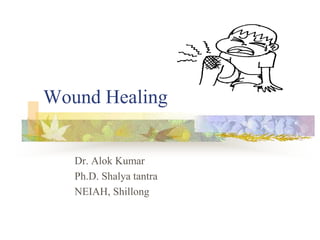This document discusses wound healing and factors that affect it. It describes the stages of wound healing as inflammation, proliferation, and remodeling. Key events in each stage are also outlined, such as neutrophil migration during inflammation and collagen deposition during proliferation. Factors that can disturb normal wound healing like infection, smoking, radiation, malnutrition and systemic diseases are also summarized. The goal of wound management is to create an optimal environment for the natural healing process.























































